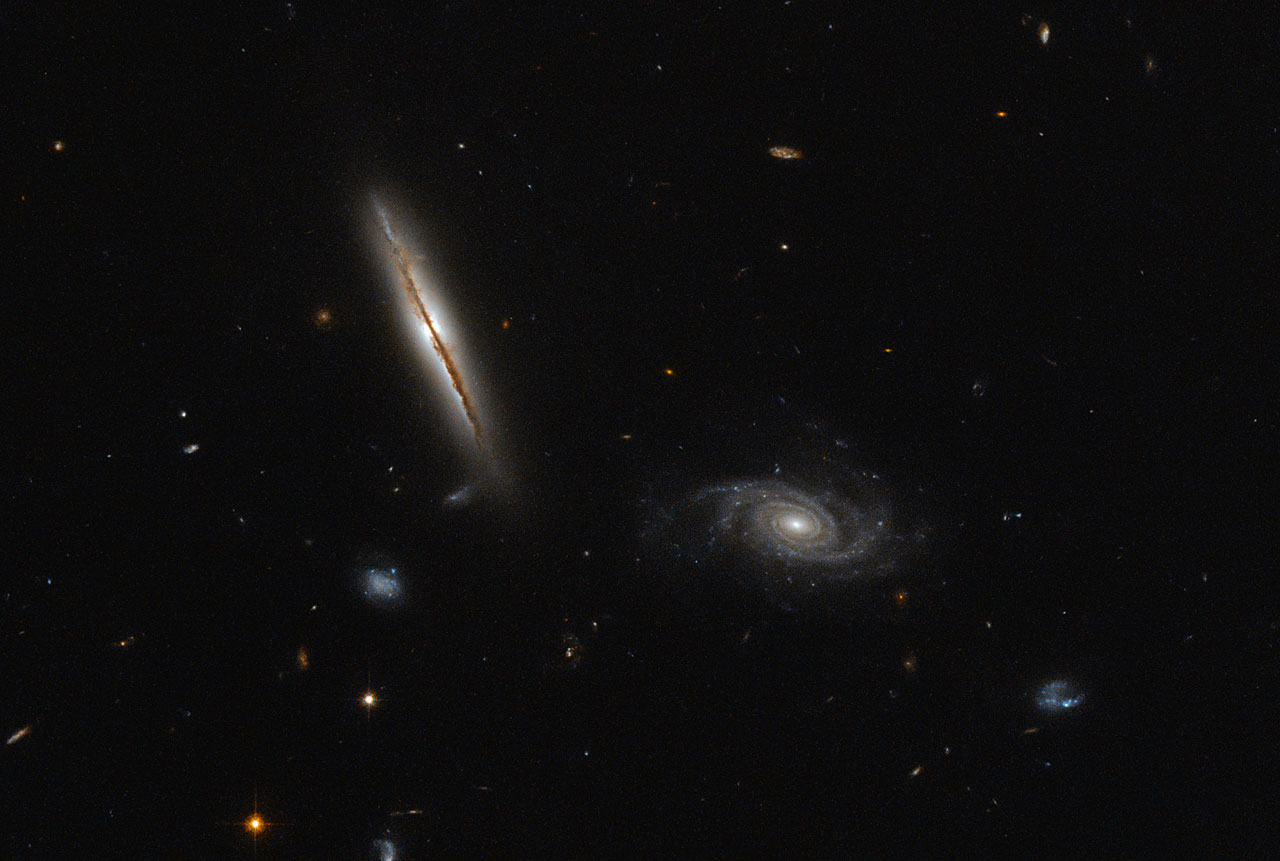
A side-portrait of LO95 0313-192. Credit: ESA/Hubble & NASA; acknowledgement, Judy Schmidt
Breaking astronomers’ standards one billion light years away is an unusual and oddly named galaxy, whose abnormalities have raised important questions about jet propulsion in the cosmos. Like our own galaxy the Milky Way, LO95 0313-192 is classified as a spiral galaxy. The name describes the appearance of arms swirling outwards from the center. Characteristically they contain lots of dust and gas, which make them prime areas for star formation. However, unlike the billions of other spiral galaxies, LO95 0313-192 also has giant jets of subatomic particles spewing from its center into space. These superheated outbursts are much more common in another type of galaxy called elliptical (also named for its shape), or in galaxies merging together. These jets are propelled by gravitational energy generated by the supermassive black hole at the galaxy’s core, and can travel at nearly the speed of light. It is unknown how these huge radio-emitting jet propulsions are formed, but scientists are hopeful that observing 0313-192 will lead to answers. In its wake, three more oddly behaving spiral galaxies have been discovered. Investigation is under way to reevaluate galaxy classification, jet propulsion science, and perhaps even how galaxies were formed in the Early Universe.

